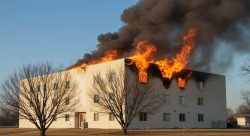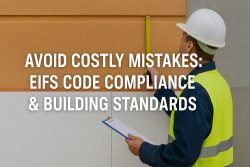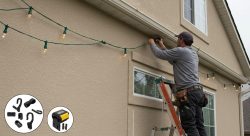Protect Your Team and Business: Essential Safety Steps for Every Plastering Project
Plastering work can be risky. Each year, many plasterers get hurt on the job. Safety is key for all plastering contractors. This blog will show you how to stay safe while working.
Key Takeaways
- Use proper safety gear like masks, gloves, and non-slip shoes to prevent injuries.
- Do daily risk checks to spot and fix dangers before work starts.
- Keep work areas clean and tidy to avoid slips, trips, and falls.
- Train all workers on safety rules and how to use tools the right way.
- Get Public Liability Insurance to protect your business from costly claims.
Understanding Plastering Risks
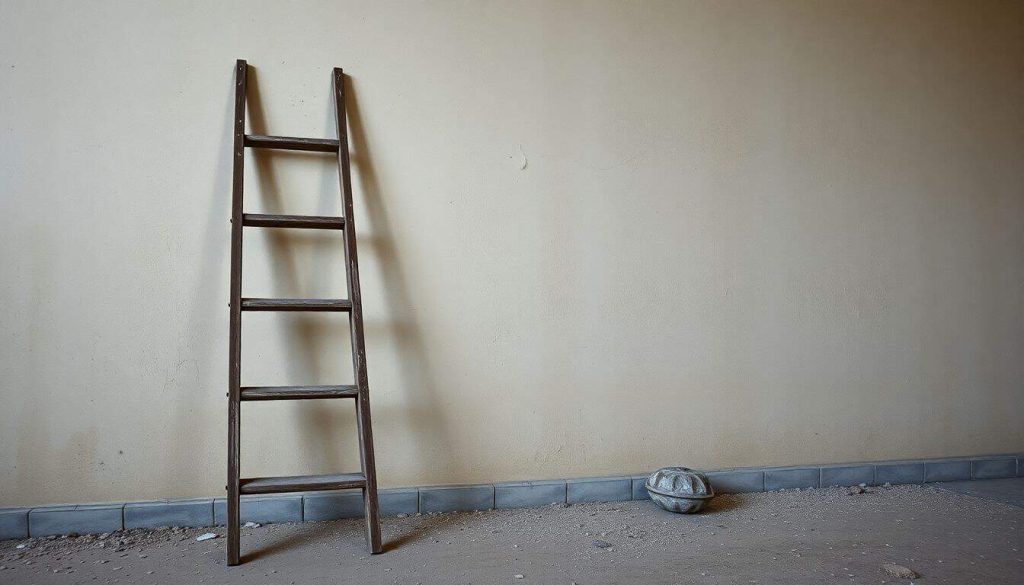
Plastering comes with risks. Workers face dangers like falls, dust, and property damage daily.
Slip and Trip Hazards
Slip and trip hazards pose big risks on plastering job sites. Wet floors, loose tools, and uneven surfaces can cause falls. These accidents often lead to injuries and costly claims.
Smart plasterers keep work areas clean and tidy. They use non-slip mats and proper footwear to stay safe.
A clean workspace is a safe workspace.
Safety gear plays a key role in avoiding slips and trips. Good boots with grip soles help workers stay steady. Hard hats protect against head injuries from falls. Clear paths and good lighting also cut down on accidents.
Plasterers must stay alert and watch their step at all times.
Dust Inhalation
Dust from plastering can harm your lungs. Tiny bits of plaster float in the air and get into your nose and mouth. These small pieces can cause big problems if you breathe them in often.
Plasterers need to wear masks to keep this dust out. Good masks stop the dust from getting into your body.
Safety gear is a must for all plasterers. Odor masks are key to stopping dust from getting in. They cover your nose and mouth to filter out bad stuff. Using these masks helps keep your lungs safe.
It’s smart to pick masks that fit well and change them often. This way, you stay healthy while doing your job.
Accidental Damage to Property
Plastering jobs can lead to property damage. Paint spills, drywall cracks, or broken fixtures are common issues. These mishaps can cost a lot to fix. They may also hurt your business reputation.
Public Liability Insurance is key for plasterers. It covers claims for property damage. This helps protect your business from big losses.
Careful work habits can prevent many accidents. Use drop cloths to catch spills. Move fragile items away from work areas. Check your tools often to avoid mishaps. Train your team to spot and avoid risks.
Small steps like these can save you from costly mistakes and keep clients happy.
Liability Risks
Liability risks pose a big threat to plastering contractors. These risks can lead to costly lawsuits and damage to your business. Public Liability Insurance is a must-have. It covers claims for injury and property damage.
Employers’ Liability Insurance is also key. The law says you need at least £5 million in coverage.
Safety isn’t expensive, it’s priceless.
Smart contractors take steps to cut risks. They train staff well and use good safety gear. They check job sites daily for dangers. Keeping work areas clean helps too. By doing these things, you can avoid many problems before they start.
Essential Safety Tips for Plasterers
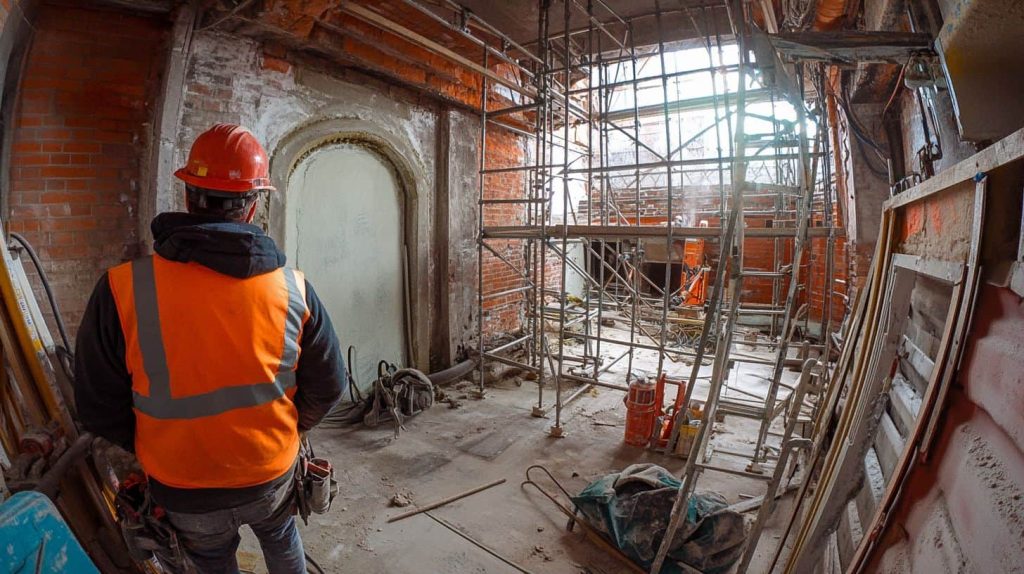
Safety tips for plasterers can save lives and prevent injuries. Want to learn more? Keep reading!
Invest in Regular Staff Training
Regular staff training is key for plastering contractors. It keeps workers safe and up-to-date on best practices.
- Schedule monthly safety meetings
- Cover new rules and methods
- Review past incidents and how to avoid them
- Let workers share their safety concerns
- Offer hands-on training sessions
- Practice using new tools safely
- Learn proper lifting techniques
- Try out different types of protective gear
- Bring in expert speakers
- Invite health and safety pros to talk
- Learn about the latest industry standards
- Get tips on risk management
- Use online learning tools
- Assign short safety videos to watch
- Give quick quizzes to test knowledge
- Track who’s done their training
- Teach proper use of protective equipment
- Show how to wear masks and goggles right
- Explain when to use each type of gear
- Practice putting on and taking off equipment
- Focus on ladder and scaffold safety
- Train on setting up and using ladders
- Teach how to check if scaffolds are secure
- Practice safe climbing and working at heights
- Cover first aid basics
- Train staff to handle small cuts and scrapes
- Teach how to spot signs of heat stress
- Show where first aid kits are kept on site
- Review emergency plans often
- Go over what to do if someone gets hurt
- Practice fire drills and evacuation routes
- Make sure everyone knows who to call for help
Use Quality Personal Protective Equipment (PPE)
Quality PPE is vital for plasterers. It guards against many job risks.
- Wear proper masks: Odor masks stop dust and fumes. They keep your lungs safe from harm.
- Use eye protection: Safety glasses shield your eyes. They block flying bits of plaster and other debris.
- Pick the right footwear: Ladder-safe shoes give you grip. They help prevent slips and falls on the job site.
- Don sturdy gloves: Good gloves protect your hands. They guard against cuts, scrapes, and harsh chemicals.
- Dress in long sleeves: Cover your arms to avoid skin issues. This helps block plaster dust and other irritants.
- Sport a hard hat: Head gear stops bumps and falling objects. It’s key when working below others or near tools.
- Use ear plugs: Loud tools can hurt your hearing. Ear protection keeps noise levels safe.
- Wear a safety harness: This is a must for high work. It can save your life if you slip off a scaffold.
- Keep gear clean: Dirty PPE won’t work well. Clean your gear often to stay safe.
- Check PPE daily: Look for wear and tear. Replace items that don’t work right away.
Conduct Daily Risk Assessments
Daily risk checks keep workers safe. Smart bosses do these checks each day to spot dangers.
- Look for trip hazards: Clear paths of tools, cords, and trash.
- Check gear: Make sure safety items like hard hats and gloves are in good shape.
- Inspect tools: Test all power tools before use to avoid accidents.
- Watch the weather: Plan for rain, heat, or cold that could cause problems.
- Talk to the team: Ask workers if they have any safety worries.
- Review the day’s tasks: Think about risks for each job on the list.
- Check the work area: Look for weak spots in floors or walls.
- Plan for emergencies: Know where first aid kits and fire exits are.
- Update safety signs: Put up fresh warnings if needed.
- Double-check heights: Make sure ladders and scaffolds are steady.
Maintain a Safe and Healthy Work Environment
A safe work site is key for any plastering job. Here are some tips to keep your space healthy and secure:
- Clean up spills fast. Wet floors can cause slips and falls.
- Keep tools tidy. Put them away when not in use to avoid trips.
- Use good lighting. Bright spaces help you see hazards.
- Check air flow. Open windows or use fans to reduce dust.
- Mark off work areas. Use tape or signs to warn others of dangers.
- Take regular breaks. Rest helps you stay alert and avoid mistakes.
- Keep a first aid kit handy. Quick care can stop small issues from getting worse.
- Use the right gear. Wear gloves, masks, and goggles to stay safe.
- Follow safety rules. Know and use all site safety guidelines.
- Report problems right away. Tell your boss about any risks you see.
Work Tidily to Minimize Risks
Keeping a tidy workspace is key to safety in plastering. A clean site cuts down on slip and trip risks. It also makes work faster and safer. Plasterers should clean up spills right away.
They need to put tools back where they belong after use. Keeping cords and hoses neat helps prevent trips. A clean site is easier to move around in. This means less chance of bumping into things or falling.
Tidiness also helps spot dangers before they cause harm. It’s easier to see loose boards or weak spots in a clean area. Plasterers can fix these issues fast. A neat workspace lets workers focus on their tasks.
They don’t have to worry about tripping or getting hurt. This leads to better work and fewer accidents. Clean sites also look good to clients. It shows that the team cares about safety and quality.
Special Considerations for Specific Tasks
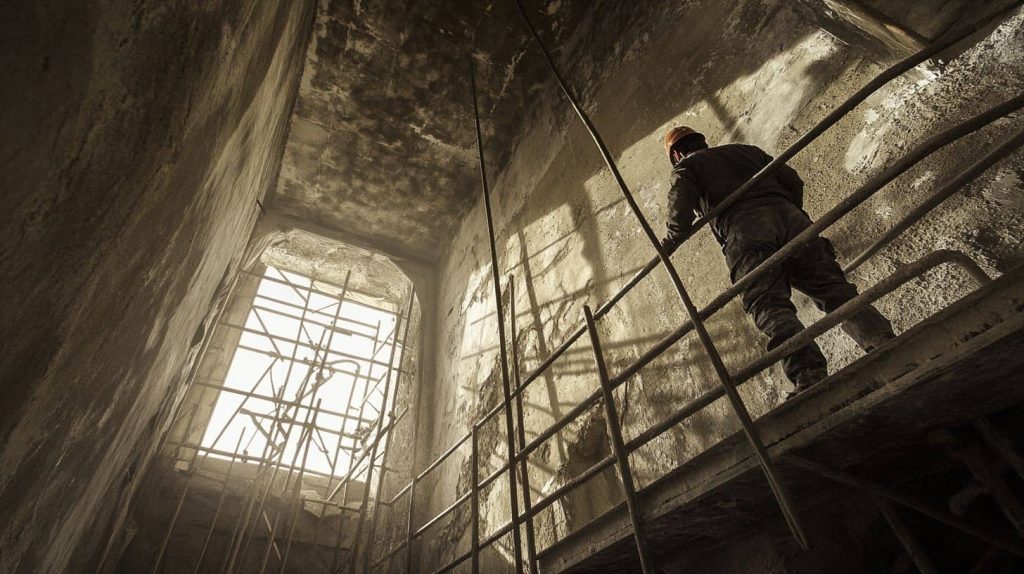
Plastering tasks come with unique risks. Working at heights, using power tools, and dealing with tight spaces need extra care. Want to learn more about staying safe on the job? Keep reading!
Working at Heights
Working at heights is a key part of plastering. Safety must come first when you’re up high.
- Use stable ladders or scaffolds
- Check equipment before each use
- Wear non-slip shoes with good tread
- Keep work areas clean and dry
- Use a safety harness when needed
- Don’t overreach – move the ladder instead
- Have a helper hold the ladder base
- Avoid working alone at heights
- Take breaks to stay alert
- Keep tools secured so they don’t fall
- Use tool lanyards to prevent drops
- Mark off areas below to keep others safe
- Watch for power lines nearby
- Don’t use ladders in windy weather
- Train staff on proper height safety
Handling Electrical Tools and Equipment Safely
Electrical tools are key in plastering work. But they can be risky if not used right.
- Check all cords and plugs before use. Look for frays, cuts, or damage.
- Keep tools dry. Never use them in wet areas or with wet hands.
- Unplug tools when not in use. This stops accidental starts.
- Wear rubber-soled shoes. They help guard against shocks.
- Use tools with three-prong plugs. These offer better grounding.
- Keep work areas well-lit. Good light helps you see what you’re doing.
- Don’t carry tools by their cords. This can damage the wiring.
- Use ground fault circuit interrupters (GFCIs). They cut power if there’s a fault.
- Keep metal tools away from live wires. Metal conducts electricity.
- Train all workers on tool safety. Only trained people should use risky tools.
- Store tools in a dry place. Moisture can damage them over time.
- Don’t use tools with broken switches. They may turn on by mistake.
Preventing Fires on the Job Site
Fires on job sites can cause huge losses. Here are key steps to stop fires from starting:
- Keep flammable items away from heat sources. This means storing paint, gas, and other risky items far from sparks or flames.
- Check all tools and cords for damage. Frayed wires or broken tools can spark fires, so fix or replace them right away.
- Set up fire alarms and keep fire gear handy. Smoke detectors and fire extinguishers can save lives and stop small fires from growing.
- Train workers on fire safety rules. Make sure everyone knows how to use fire gear and what to do if a fire starts.
- Don’t smoke near work areas. Set up a safe spot away from the site for smoke breaks.
- Clean up spills fast. Wipe up any oil, gas, or other liquids that could catch fire.
- Keep work areas tidy. Piles of trash or wood scraps can fuel fires, so clean up often.
- Use safe heating methods. Space heaters need care, and open flames are never okay on site.
- Follow the rules for hot work. Tasks like welding need special care to stop sparks from starting fires.
- Have a fire plan ready. Know how to get out fast and where to meet if there’s a fire.
Precautions in Confined Spaces
Confined spaces pose unique risks for plasterers. Safety is key when working in tight spots.
- Check air quality: Test the air before entering. Use a gas meter to detect harmful gases.
- Proper ventilation: Set up fans or blowers to keep fresh air flowing. This helps prevent dust build-up and keeps workers safe.
- Use buddy system: Never work alone in confined spaces. Have a partner outside to help if needed.
- Wear the right gear: Put on hard hats, gloves, and dust masks. These items protect you from harm.
- Plan escape routes: Know how to get out fast. Keep paths clear of tools and trash.
- Use proper lighting: Bring bright, safe lights. Good vision helps avoid trips and falls.
- Take breaks often: Step out for fresh air every so often. This keeps you alert and healthy.
- Keep tools tidy: Store gear neatly to avoid tripping. A clean space is a safe space.
- Stay in touch: Use radios or signals to talk with the team outside. Quick help can save lives.
- Train all workers: Make sure everyone knows the risks and rules. Safety starts with knowledge.
Equipment and Protective Gear
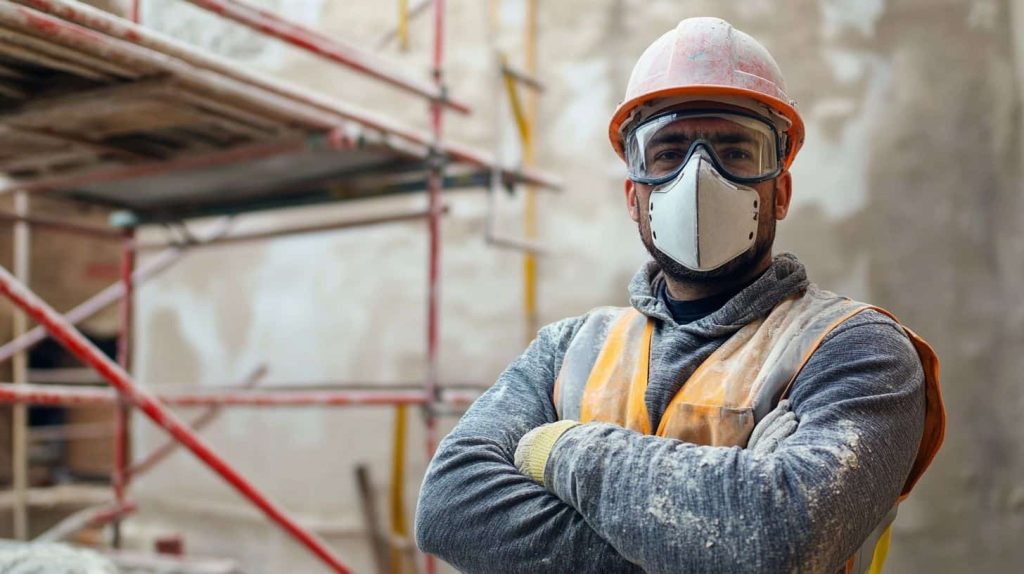
Safety gear is a must for plasterers. The right tools and gear can save lives on the job.
Proper Use of Ladders and Scaffolding
Ladders and scaffolding are key tools for plasterers. Using them right keeps workers safe. Always check ladders before climbing. Make sure they’re on flat ground and locked in place.
Don’t stand on the top two steps. For scaffolding, use sturdy platforms and guard rails. Keep the work area clear of tools and debris. This cuts down on trip hazards. Workers should wear hard hats and non-slip shoes when up high.
Training is vital for safe ladder and scaffold use. Teach workers how to set up, use, and take down this gear. Regular checks help spot wear and damage early. Replace any broken parts right away.
Good care of ladders and scaffolds helps prevent falls and keeps job sites safer.
Importance of Protective Eyewear and Odor Masks
Protective eyewear and odor masks are must-haves for plasterers. These items guard against serious risks on the job. Safety glasses shield eyes from flying bits of plaster and dust.
They also block harmful chemicals that could hurt vision. Odor masks keep workers from breathing in dust and fumes. This helps prevent lung problems down the road.
Using the right gear makes work safer and more comfy. Good masks filter out tiny particles that can harm health. Quality eyewear fits well and doesn’t fog up. Both items let workers focus on their tasks without worry.
Smart plasterers always use these tools to stay safe on site.
Selecting the Right Gloves and Footwear
Picking the right gear matters for plasterers. Good gloves guard hands against harsh stuff and cuts. They should fit well and let you move easily. For feet, ladder-safe shoes are a must.
These have special soles that grip well on rungs. They also protect toes from falling objects. Comfy, sturdy boots help you work safely all day long.
Managing Emergencies and Accidents

Accidents happen fast. You need a plan. Learn how to handle cuts, falls, and other job site mishaps. Keep reading to get the scoop on staying safe when things go wrong.
Steps to Take in Case of Accidents or Injuries
Accidents can happen on any job site. Here’s what to do if someone gets hurt:
- Stay calm and assess the scene. Check for any ongoing dangers.
- Call for help right away. Dial 911 for serious injuries.
- Give first aid if you’re trained. Stop bleeding and keep the person still.
- Don’t move the hurt person unless they’re in danger.
- Clear the area. Keep others away to give space to the injured.
- Gather info about what happened. Write down details while fresh in mind.
- Tell your boss about the accident. Follow company rules for reporting.
- Save any items linked to the accident. They may be needed later.
- Take photos of the accident scene. This can help with insurance claims.
- Fill out all needed paperwork. Do this as soon as you can.
- Check on the injured person later. See how they’re doing and if they need help.
- Review what happened to prevent future accidents. Learn from each event.
How to Handle Cuts and Abrasions
Cuts and scrapes often happen on plastering jobs. Here’s how to deal with them safely:
- Clean the wound right away with soap and water.
- Apply pressure to stop bleeding with a clean cloth.
- Use an antibiotic cream to prevent infection.
- Cover the cut with a sterile bandage.
- Change the bandage daily or when it gets dirty.
- Watch for signs of infection like redness or swelling.
- Seek medical help for deep cuts or ones that won’t stop bleeding.
- Keep a first aid kit on site with bandages and antiseptic wipes.
- Train workers on basic first aid for minor injuries.
- Log all injuries in a site accident book, no matter how small.
- Make sure tetanus shots are up to date for all workers.
Legal and Insurance Aspects
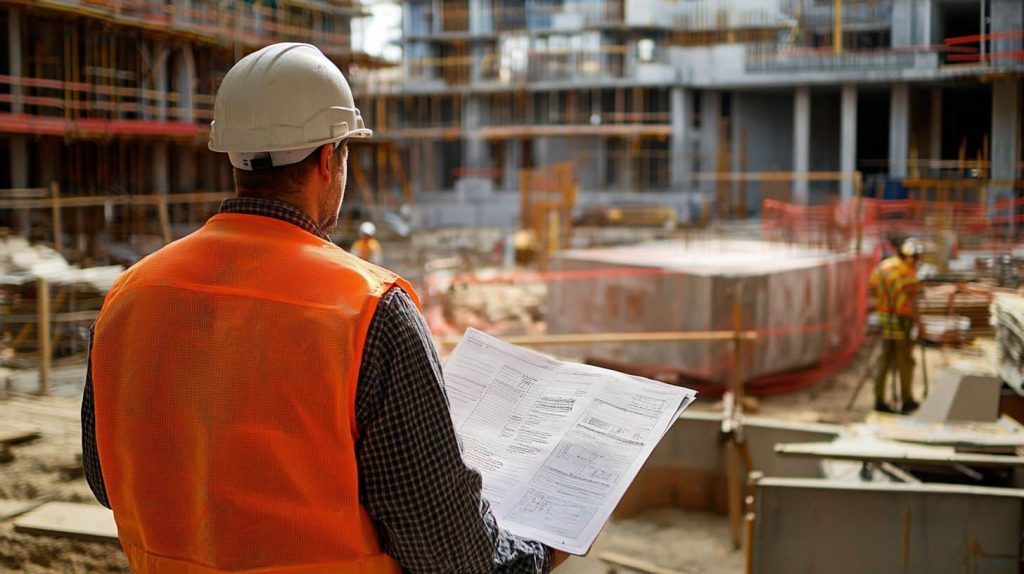
Legal stuff matters in plastering. You need the right insurance to protect yourself and others. Get public liability and personal accident coverage. These keep you safe from big losses.
Want to learn more? Keep reading!
Understanding Public Liability Insurance
Public Liability Insurance guards plasterers against costly claims. It covers legal fees and payouts if someone gets hurt or their stuff gets damaged due to your work. For example, if a client trips on your tools and breaks their arm, this insurance helps.
There are different levels of coverage – $1 million, $2 million, or $5 million. Picking the right amount depends on your job size and risks.
Benefits of Personal Accident Insurance
Personal accident insurance is a smart choice for plasterers. It helps when you can’t work due to an injury. This type of cover pays you money if you get hurt on the job. It makes up for lost wages while you heal.
Many plasterers find this insurance vital. It gives peace of mind on risky job sites. If you fall or get hurt, you won’t lose all your income. The policy can cover medical bills too.
It’s a safety net that protects your finances and health.
Safety Tips for EIFS Installation and Repair
EIFS work needs careful safety steps. Here are key tips for safe EIFS installation and repair:
- Wear proper gear. Use safety glasses, dust masks, and gloves to protect yourself.
- Check tools often. Make sure all tools are in good shape before you start work.
- Keep work areas clean. Clear away trash and spills to avoid trips and falls.
- Use safe ladders. Set up ladders on flat ground and don’t overreach.
- Watch for wires. Look out for power lines when working high up.
- Mix materials safely. Follow product guides when mixing EIFS parts.
- Protect your skin. Wear long sleeves and pants to avoid skin contact with EIFS stuff.
- Stay alert in heat. Drink water and take breaks to avoid getting too hot.
- Secure work zones. Use signs and tape to keep others away from your work area.
- Know first aid. Keep a first aid kit nearby and know how to use it.
Understanding the Differences Between Traditional Plastering and EIFS Stucco
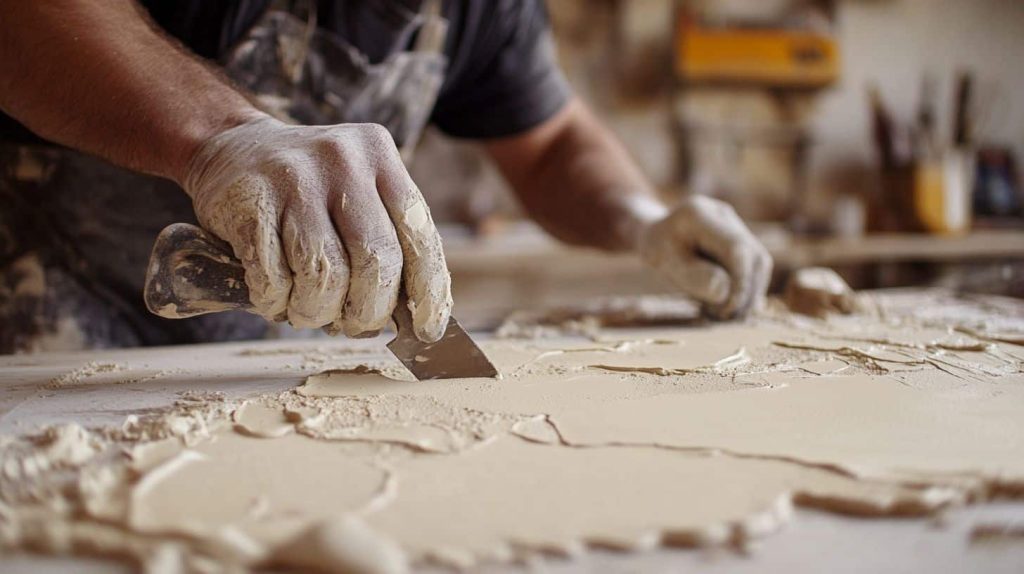
Traditional plastering and EIFS stucco differ in key ways. Traditional plaster uses cement, lime, and sand. It’s applied wet and dries hard. EIFS stucco is a newer system. It uses foam boards and special coatings.
This makes it lighter and more energy-efficient.
Each method has its pros and cons. Traditional plaster is tough and long-lasting. But it can crack over time. EIFS is easier to install and offers better insulation. Yet, it may not hold up as well to impacts.
Knowing these differences helps contractors pick the right method for each job.
The Importance of Regular EIFS Inspections and Repair
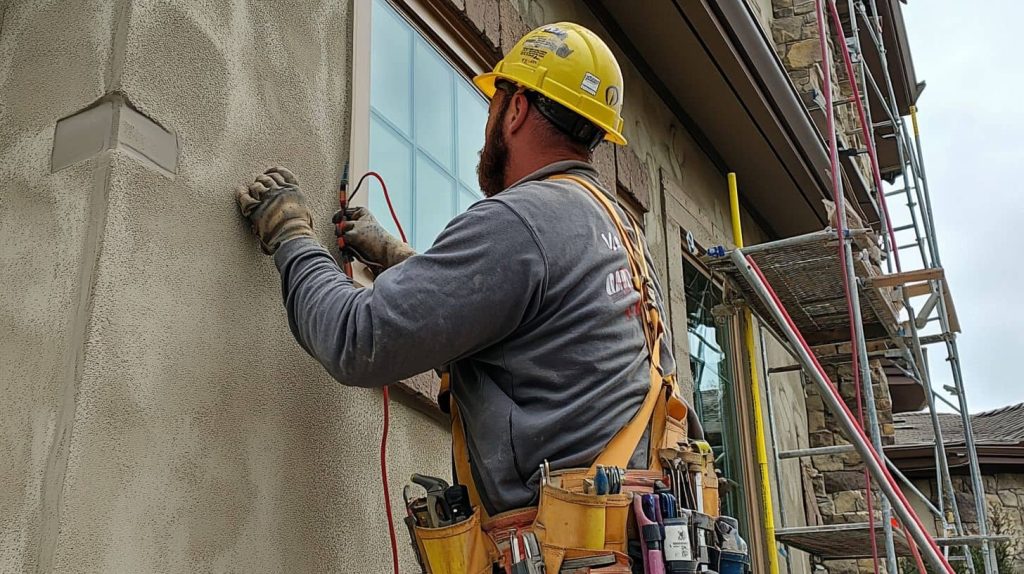
Regular EIFS checks are key for safe plastering work. These checks help find problems early. This keeps workers and buildings safe. Fixing small issues quickly stops big, costly repairs later.
Smart contractors do these checks often. They know it saves money and time in the long run.
EIFS needs care to work well. Water can sneak in if not checked. This can cause rot or mold. Good inspections catch these issues fast. Quick fixes keep the system strong. They also keep the building looking nice.
Safe EIFS means happy clients and fewer risks for workers.
Promoting Safety Culture
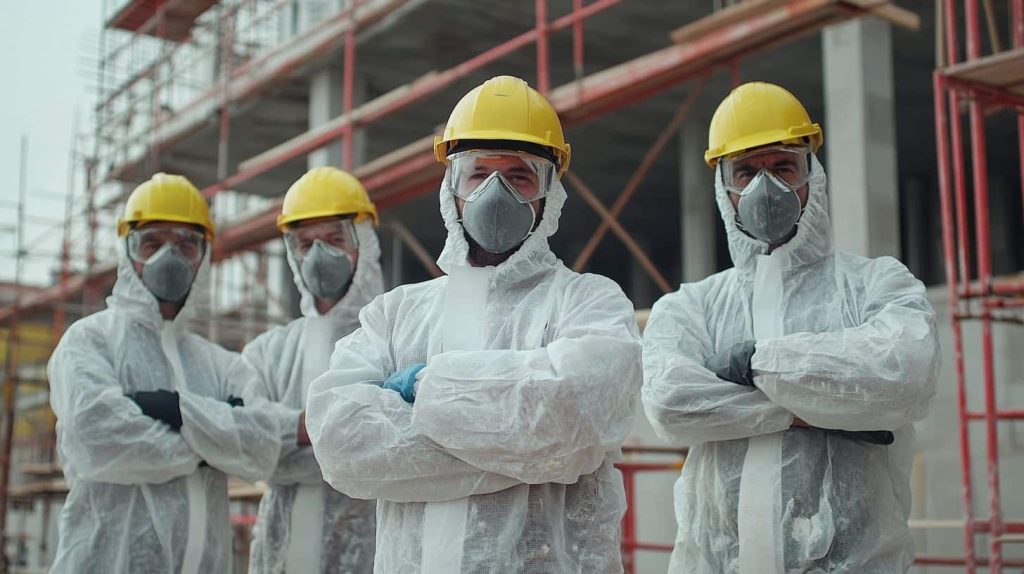
Safety culture starts with you. It’s about looking out for each other on the job. A team that cares about safety works better and smarter. Want to learn more about building a strong safety culture? Keep reading!
Importance of Team Protection
Team safety is a must in plastering. Every worker needs to look out for each other. This means using the right gear and following rules. It also means speaking up when something looks risky.
A safe team is a strong team. They work better and faster.
Bosses play a big role in team safety. They must give workers good training and tools. The law says they need insurance worth at least £5 million. This protects the team if something goes wrong.
With these steps, everyone can focus on doing great work.
Educating Clients and the Public on Safety Measures
Safety matters for everyone on a job site. Plasterers must teach clients and the public about risks. This helps keep people safe and aware. Clients need to know about dust, slips, and falls.
They should also learn about work areas and tools. Clear signs and talks can spread this info.
Public safety is key too. People walking by need to know about dangers. Fences and signs can mark off work zones. Plasterers can hand out flyers with safety tips. This helps folks stay safe near work sites.
It also shows that the company cares about safety.
Conclusion
Plastering work can be risky. But smart steps keep everyone safe. Use good gear, train your team, and check for dangers daily. Stay alert and follow the rules. Your care protects you, your crew, and your clients.
FAQs
What safety gear should plasterers use on-site?
Plasterers need the right protective equipment. This includes hard hats, safety glasses, gloves, and dust masks. For jobs at height, use safety harnesses. Ladder-safe shoes help prevent slips. These items safeguard workers from daily risks in construction.
How can plasterers reduce the risk of falling?
Work from platforms when possible. If using ladders, check they’re stable. Reposition them to cut fall risks. For ceiling work, consider plastering stilts. Always take your time and stay aware of your surroundings. Safety trumps speed in the plastering industry.
What insurance should plastering contractors have?
Employers’ liability insurance is a must. It covers worker injuries. Personal accident insurance helps cover loss of earnings if you can’t work. These policies protect you and your team. They’re vital for managing risks in professional plastering.
How often should safety checks happen on a plastering project?
Do safety checks each morning and afternoon. Look for potential hazards like loose cables or unstable platforms. A cross trades risk assessment helps spot issues from other work. Regular checks keep the site safe for your team and the public.
What are key safety considerations when applying wall plaster?
Use odor masks to protect from fumes. Ensure good ventilation, especially with heat strippers. Take breaks to avoid fatigue. Clean spills fast to prevent slips. These steps boost safety and efficiency in your plastering work.
How can plasterers stay updated on safety regulations?
Check the Health and Safety Executive (HSE) website often. Join trade groups for the latest info. Get a CSCS card to prove your safety knowledge. Staying informed helps you follow rules and avoid putting anyone at risk during plastering jobs.

